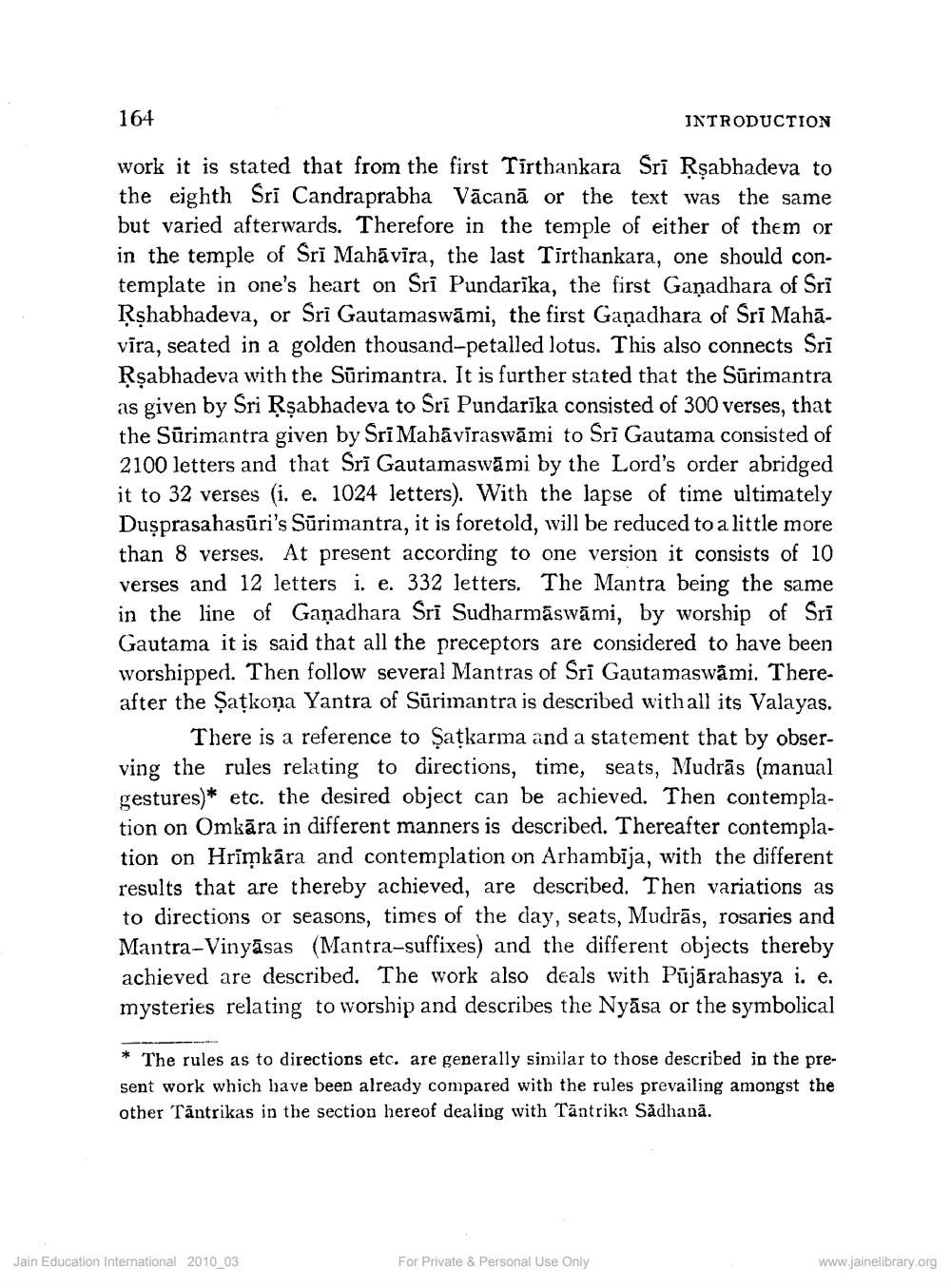________________
164
INTRODUCTION
work it is stated that from the first Tirthankara Sri Rşabhadeva to the eighth Sri Candraprabha Vācanā or the text was the same but varied afterwards. Therefore in the temple of either of them or in the temple of Sri Mahāvīra, the last Tīrthankara, one should contemplate in one's heart on Sri Pundarika, the first Ganadhara of Sri Rşhabhadeva, or Sri Gautamaswāmi, the first Gañadhara of Sri Mahā. vīra, seated in a golden thousand-petalled lotus. This also connects Sri Rşabhadeva with the Sūrimantra. It is further stated that the Sūrimantra as given by Sri Rşabhadeva to Sri Pundarīka consisted of 300 verses, that the Sūrimantra given by Sri Mahāvīraswāmi to Sri Gautama consisted of 2100 letters and that Sri Gautamaswāmi by the Lord's order abridged it to 32 verses (i. e. 1024 letters). With the lapse of time ultimately Dusprasahasūri's Sūrimantra, it is foretold, will be reduced to a little more than 8 verses. At present according to one version it consists of 10 verses and 12 letters i. e. 332 letters. The Mantra being the same in the line of Gañadhara Sri Sudharmāswāmi, by worship of Sri Gautama it is said that all the preceptors are considered to have been worshipped. Then follow several Mantras of Sri Gautamaswami. Thereafter the Satkoņa Yantra of Sūrimantra is described with all its Valayas,
There is a reference to Şațkarma and a statement that by observing the rules relating to directions, time, seats, Mudrās (manual gestures * etc. the desired object can be achieved. Then contemplation on Omkāra in different manners is described. Thereafter contempla. tion on Hrīņkāra and contemplation on Arhambija, with the different results that are thereby achieved, are described. Then variations as
to directions or seasons, times of the day, seats, Mudrās, rosaries and Mantra-Vinyāsas (Mantra-suffixes) and the different objects thereby achieved are described. The work also deals with Pūjārahasya i. e. mysteries relating to worship and describes the Nyāsa or the symbolical
* The rules as to directions etc. are generally similar to those described in the present work which have been already compared with the rules prevailing amongst the other Täntrikas in the section hereof dealing with Tāntrika Sadhana.
Jain Education International 2010_03
For Private & Personal Use Only
www.jainelibrary.org




